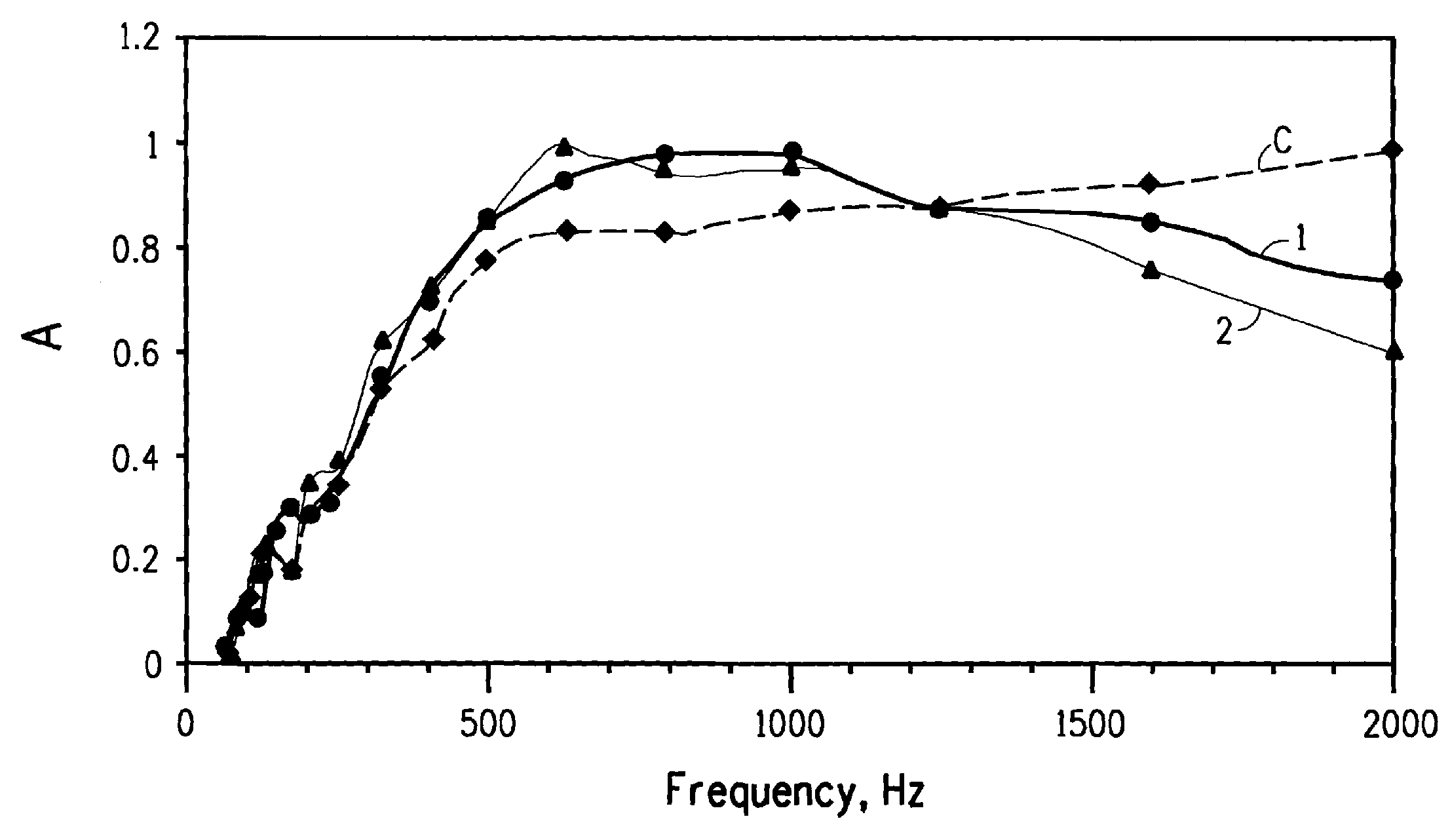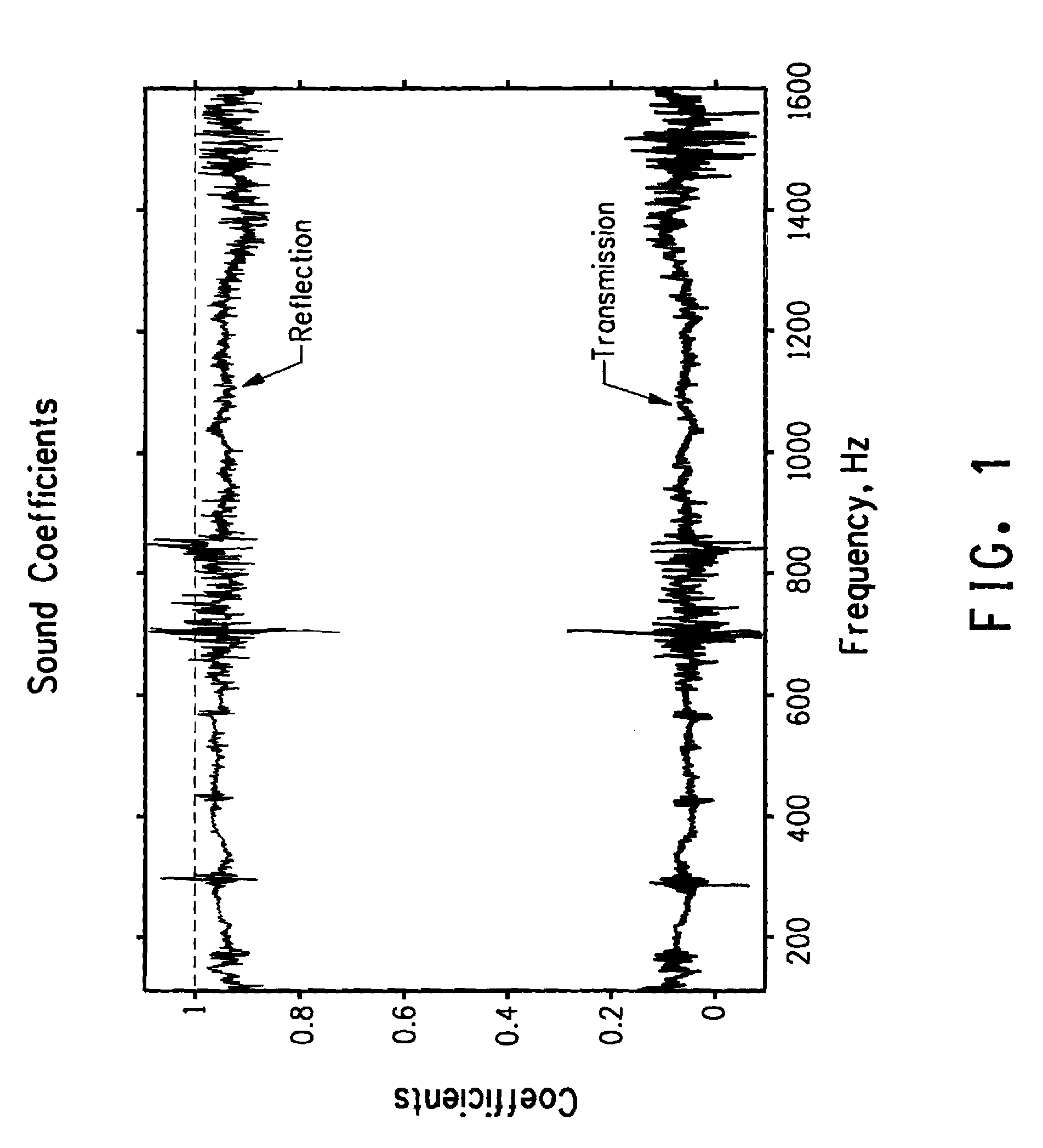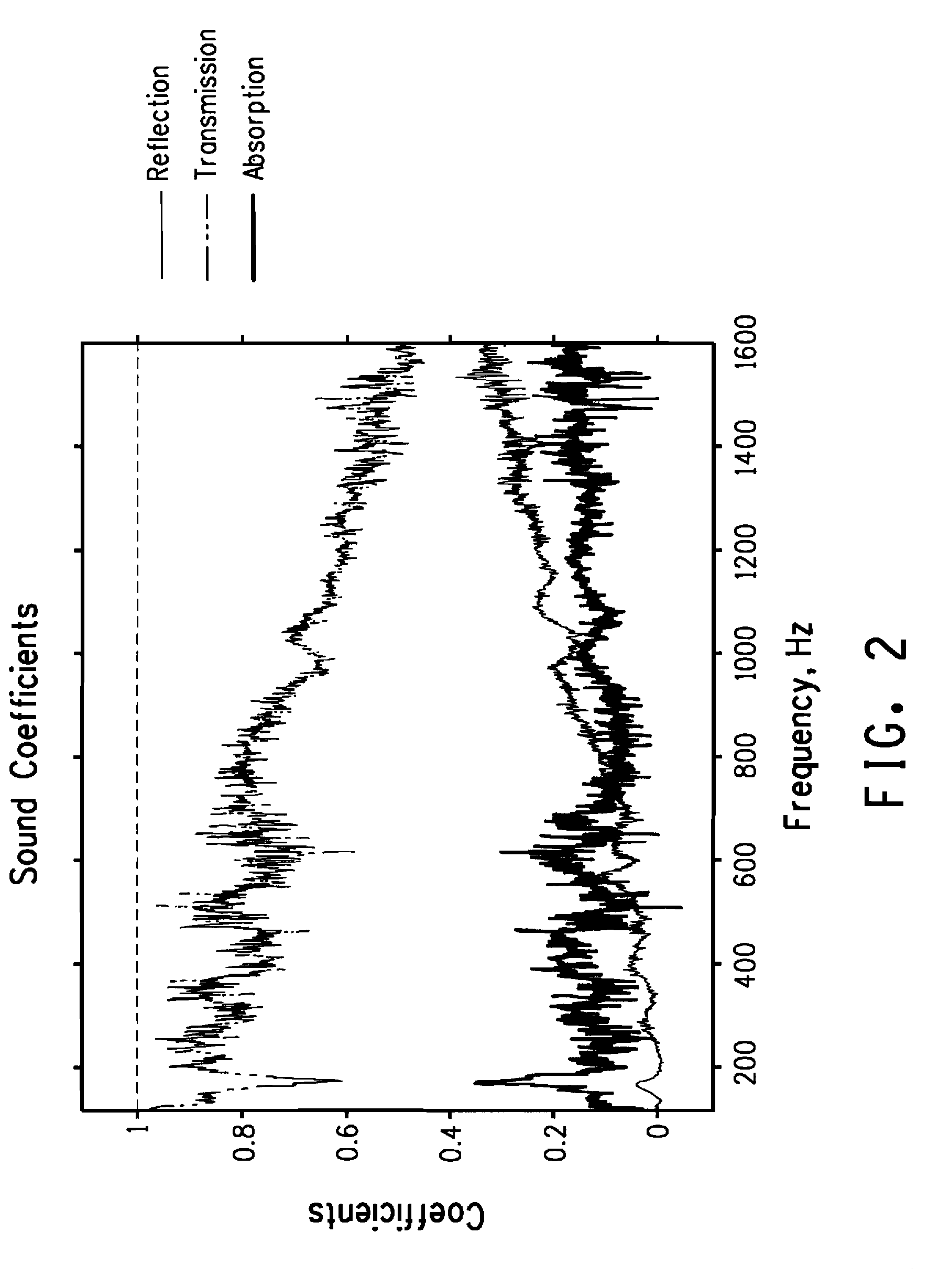Acoustic absorber with barrier facing
a technology of absorber and barrier, applied in the field of absorbers, can solve the problems of not allowing sound waves to pass, releasing particulates into the air, and high cost of known solutions to achieve appreciable absorption at low frequencies
- Summary
- Abstract
- Description
- Claims
- Application Information
AI Technical Summary
Benefits of technology
Problems solved by technology
Method used
Image
Examples
examples
Test Methods
[0044]Basis Weight was measured by the method of ASTM D 3776, modified for specimen size, and reported in units of g / m2.
[0045]Tensile Strength was measured according to ASTM D5035 and reported in units of N / 25.4 cm.
[0046]Gurley Hill Porosity was measured according to TAPPI T460 and reported in seconds.
[0047]Frazier Air Permeability was measured according to ASTM D737-75 in CFM / ft2 at 125 Pa differential pressure.
[0048]Hydrostatic Head was measured according to AATCC TM 127, DIN EN 20811 with a test rate of 60 cm of H2O per minute.
[0049]Parker Surface Smoothness was measured according to TAPPI 555 at a clamping pressure of 1.0 MPa and is reported in micrometers.
[0050]Specific Airflow Resistance is equivalent to the air pressure difference across a sample divided by the linear velocity of airflow measured outside the sample and is reported in Ns / m3. The values reported herein were determined based on the air permeability measurements as follows. The volumetric air flow Q w...
examples 1-2
[0058]Absorbers according to the invention were formed using a layer of open cell melamine foam (from Illbruck Acoustic Inc., Minneapolis, Minn.) having a thickness of 13 mm, a basis weight of 9.4 kg m3 and a specific airflow resistance of 120 rayls. A 0.1 mm thick, 17 g / m2 basis weight nylon 6,6 spunbond scrim was laid on both sides of the foam and the scrims and foam were quilted together using a pattern of approximately 11 cm×11 cm diamonds. The example absorbers were made by the lamination process described below. A vinyl acetate water based glue (WA 2173 available from efi Polymers, Denver, Colo.) was applied by a roller onto one surface of the quilted foam layer at a rate of approximately 0.3 kg / m2. A melt blown polyester nonwoven layer having a thickness of 20 mm, a basis weight of 0.33 kg / m2, and a specific airflow resistance of 130 rayls was laminated to the quilted foam layer to form the absorber core. A flash spun nonwoven facing available from DuPont under the trade name...
PUM
| Property | Measurement | Unit |
|---|---|---|
| Fraction | aaaaa | aaaaa |
| Pore size | aaaaa | aaaaa |
| Pore size | aaaaa | aaaaa |
Abstract
Description
Claims
Application Information
 Login to View More
Login to View More - R&D
- Intellectual Property
- Life Sciences
- Materials
- Tech Scout
- Unparalleled Data Quality
- Higher Quality Content
- 60% Fewer Hallucinations
Browse by: Latest US Patents, China's latest patents, Technical Efficacy Thesaurus, Application Domain, Technology Topic, Popular Technical Reports.
© 2025 PatSnap. All rights reserved.Legal|Privacy policy|Modern Slavery Act Transparency Statement|Sitemap|About US| Contact US: help@patsnap.com



